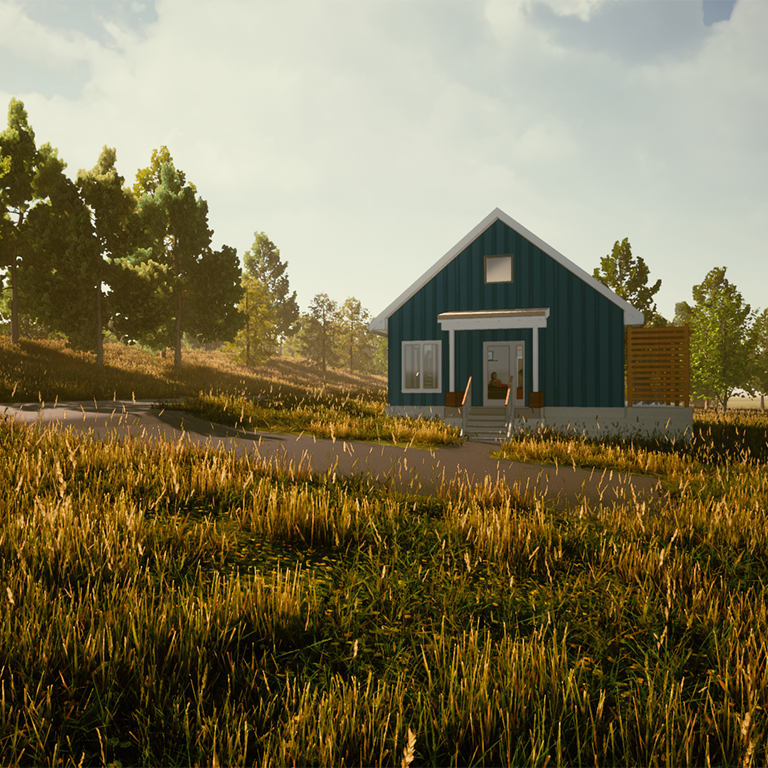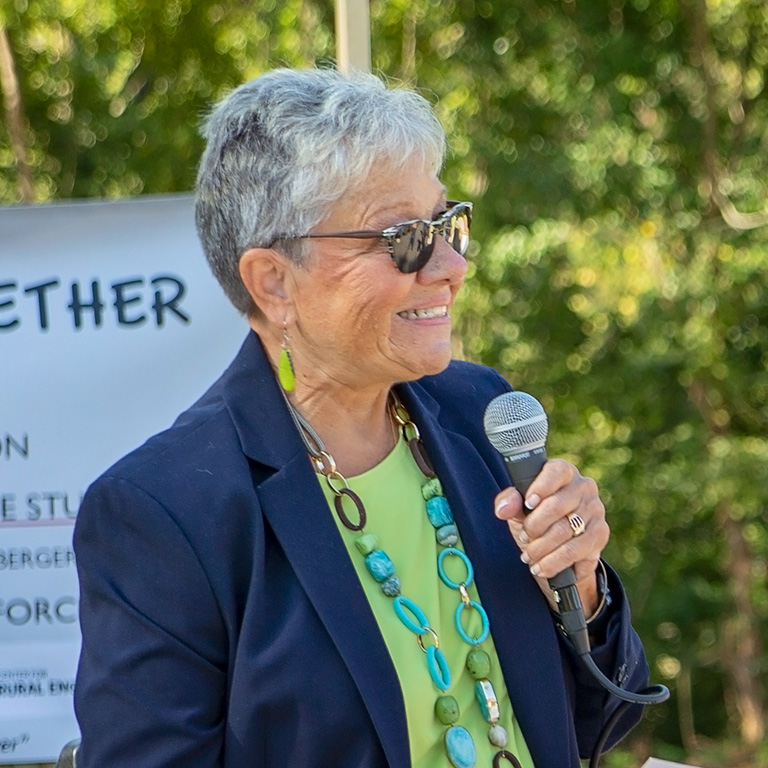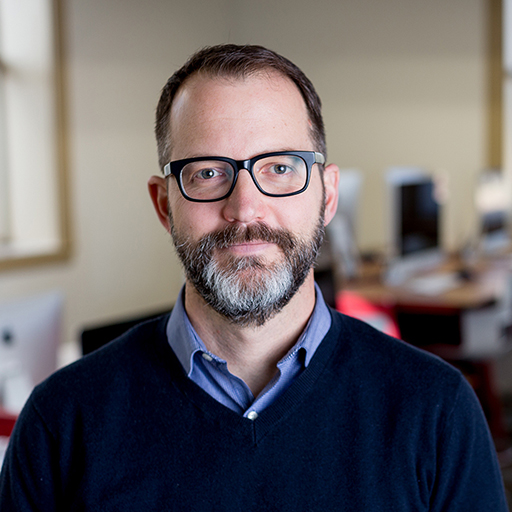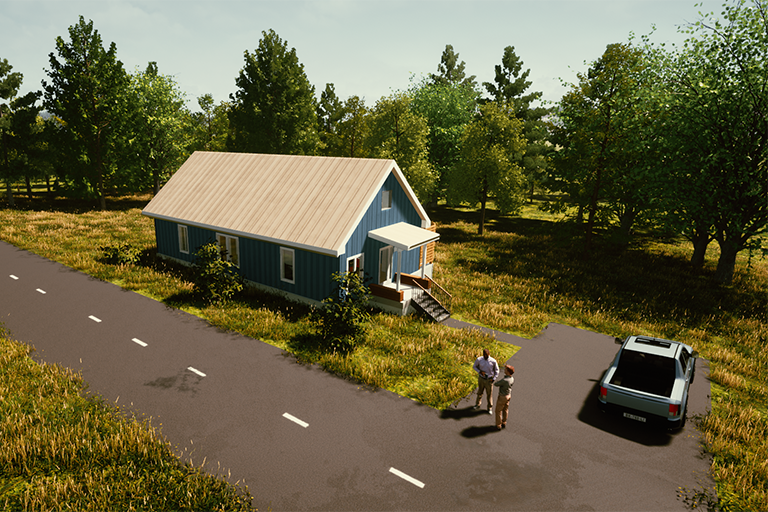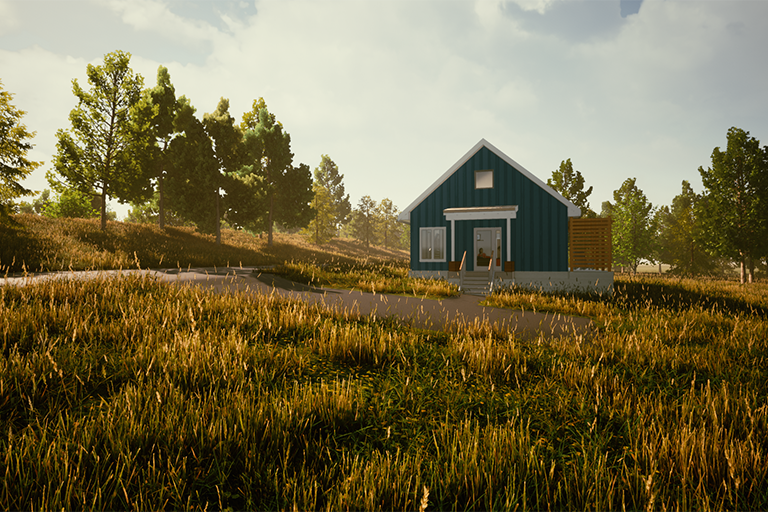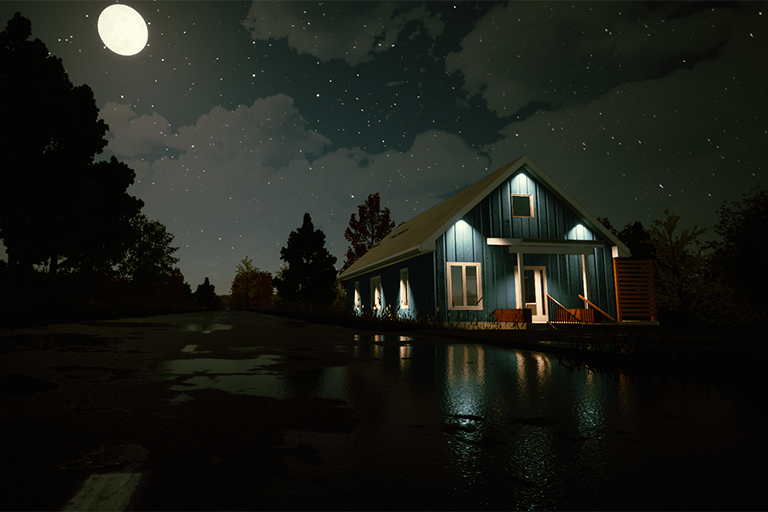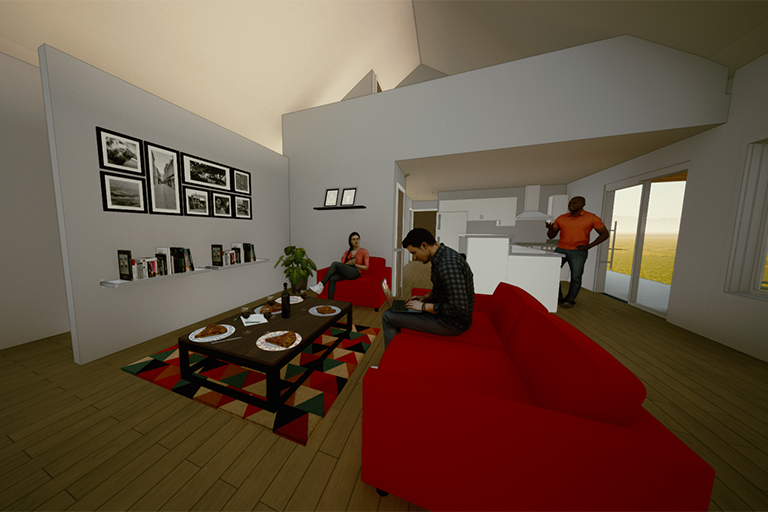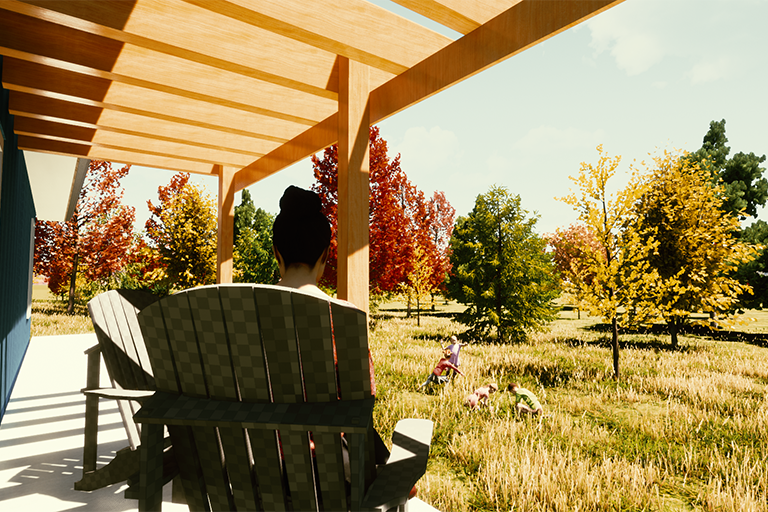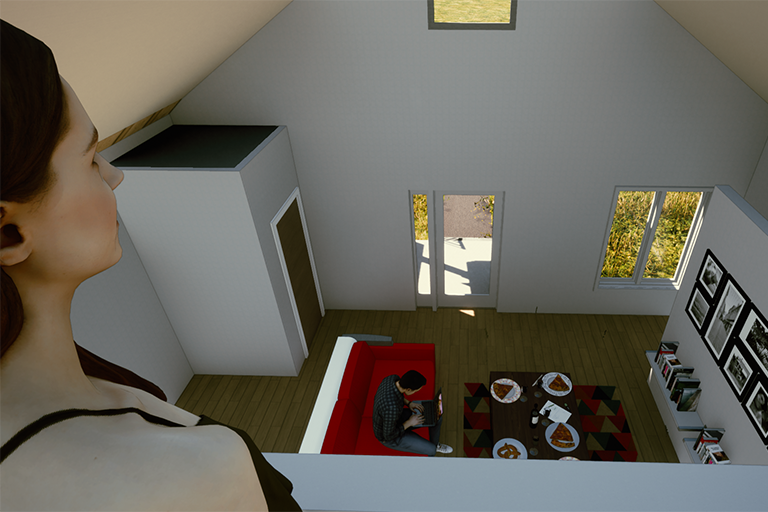“As simple as that sounds, that is kind of an unusual process with architects and contractors,” Racek said. “I started out with ‘I am here to learn from you. You have methods and ideas about how to do this well, and I want to try to incorporate as much of that into the designs as I can.’”
This exploration led Racek and his students to focus on a design based on insulated concrete forms, which are blocks that can be interlocked easily in the construction process. Shellenberger’s class of Orange County high school students at Lost River Career Cooperative joined the effort as the construction crew, where they are using this innovative building technology to construct the initial model.
“The students take those skills, no matter what they end up doing, and these skills are with them for the rest of their lives,” said Mininger.
The model home’s design incorporates passive solar techniques with glass facing the south side of the house. Racek flipped the original interior plans for the house, which will sit on a lot atop a hill overlooking downtown Paoli, so that the front door faces the historic Orange County courthouse. The house was built on a grid to minimize material waste and mechanical systems were grouped together to save installation costs. Racek is also seeking donations for solar panels for the house.
“The other thing we tried to do is create little moments that felt like special aspects of the building,” Racek said. “Instead of an eight-foot ceiling, we put in a nine-foot ceiling, which feels a lot more spacious. We added larger trim to the baseboards. These small moves don’t cost a lot but add a special touch to the project.”
The team is documenting the project to show developers and builders that this is a viable way of building—whether part of a public-private partnership or a private industry venture—that adds to the diversity of housing stock needed to meet demand. The model home is currently under construction will be sold to a private resident at cost upon completion.
With housing playing a critical role in resident retention and attraction, as well as workforce growth, the Paoli Housing Task Force is working in collaboration with the Orange County Economic Development Partnership, the Orange County Community Foundation, and the IU Center for Rural Engagement.
At the launch of this model home project, the Paoli Housing Task Force announced its “25 by 25” campaign to build and renovate 25 homes by 2025 through partnerships with community organizations, developers and builders, financial institutions and local, state and federal programs.
Imojean Dedrick, executive director of the Orange County Community Foundation, said at the model home groundbreaking ceremony in September, “One person can make a difference, but together we can make an impact. That is what we are doing today.”


